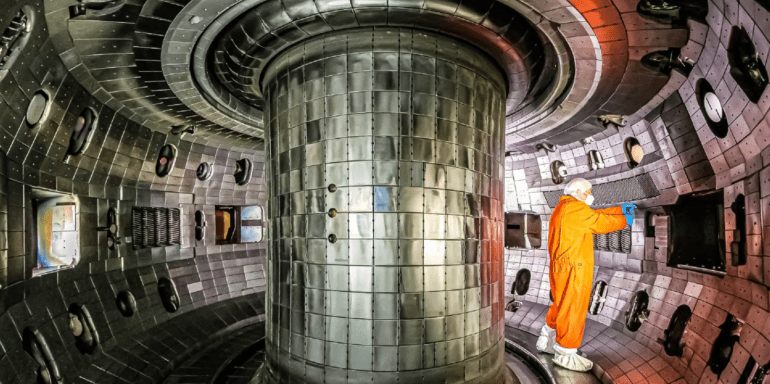TL;DR:
- DOE grants $1.2 million to Carnegie Mellon University for nuclear fusion research.
- Funding part of DOE’s $16 million investment in nine projects at 13 institutions.
- Focus on advancing fusion technology and collaborative research, including the DIII-D National Fusion Facility.
- CMU aims to develop a machine-learning-based system for plasma control.
- Success is critical for ITER, the world’s largest tokamak project, set to be completed in 2025.
- Collaboration with Princeton Plasma Physics Laboratory and SLAC National Accelerator Laboratory continues.
Main AI News:
The U.S. Department of Energy (DOE) has reaffirmed its commitment to propel nuclear fusion research by granting $1.2 million to Carnegie Mellon University’s School of Computer Science (SCS). This funding marks a crucial step in the pursuit of a clean, abundant energy source.
The DOE recently unveiled a substantial allocation of $16 million, distributed across nine groundbreaking projects spanning 13 esteemed institutions, including CMU. Collectively, these initiatives aim to solidify the scientific underpinnings necessary for the realization of fusion energy. The projects are geared toward fostering innovative fusion technologies and fostering collaborative research, encompassing both small-scale experiments and the colossal DIII-D National Fusion Facility, situated in San Diego, the United States’ largest operational tokamak.
Jean Paul Allain, the DOE’s Associate Director of the Office of Science for Fusion Energy Sciences, underscored the importance of nurturing existing fusion technologies while exploring groundbreaking innovations. He affirmed, “The extensive capabilities at DIII-D make it the ideal facility to pursue areas of great potential that are not sufficiently mature for adoption by the private sector.”
Nuclear fusion, a process in which hydrogen nuclei merge, holds the promise of unlocking an immense energy source. However, maintaining fusion at levels conducive to grid electricity production remains a formidable challenge. One approach involves harnessing magnetic fields to confine a plasma of hydrogen at the requisite temperature and pressure for nuclei fusion. This intricate process unfolds within a tokamak, a colossal machine shaped like a donut, which employs magnetic fields to corral the hydrogen plasma. This endeavor demands hundreds of micromanipulations to the magnetic fields and precise injections of hydrogen particles.
The DOE’s generous funding is set to facilitate Jeff Schneider, a Research Professor at the Robotics Institute, and his dedicated team in their quest to employ machine learning in controlling fusion reactions. In a groundbreaking development last year, Ian Char, a Doctoral Candidate in the Machine Learning Department under Schneider’s guidance, successfully employed reinforcement learning to manage the hydrogen plasma within the DIII-D tokamak. Char’s accomplishments marked several pioneering milestones, including being the first CMU researcher to conduct experiments on these coveted machines and utilizing reinforcement learning to influence tokamak plasma rotation, all within the largest operational tokamak machine in the United States.
Building upon these achievements, Schneider and his team are now embarking on the development of a machine-learning-based system capable of simultaneous control over hydrogen particle injections, plasma shape, current, and density. This technological advancement is pivotal for the ITER project, formerly known as the International Thermonuclear Experimental Reactor—a multinational fusion research endeavor slated to become the world’s largest tokamak upon completion in 2025.
Schneider affirmed, “The proposed work will bring the power of machine learning techniques to plasma control at DIII-D. This will set the stage for the successful operation of ITER, which requires plasma control at a level beyond current capabilities, and will also expand the scientific understanding of plasma evolution and instabilities.” Carnegie Mellon University, with its expertise in machine learning, stands at the forefront of enabling the global scientific community to harness a new source of clean, abundant energy.
Continuing its tradition of collaboration, the CMU team will join forces with the Princeton Plasma Physics Laboratory and the SLAC National Accelerator Laboratory at Stanford, ensuring a synergistic approach to advancing fusion research.
Conclusion:
The DOE’s $1.2 million funding injection into Carnegie Mellon’s nuclear fusion research signifies a significant stride towards achieving clean, abundant energy. This commitment reflects the importance of advancing fusion technology and collaborative research, with a focus on machine learning-driven plasma control. As Carnegie Mellon collaborates with esteemed institutions, it underscores a growing market interest in fusion energy and positions itself as a key player in driving innovation in this sector.

